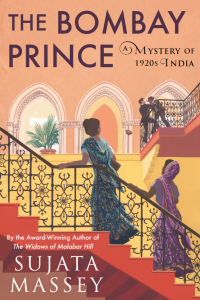This post originally appeared on Murder Is Everywhere.

What a grand feeling for a writer to labor over the creation of the book, reach the final page, and triumphantly type: THE END.
(Sujata clears throat) Sorry, it’s not the end. If you’re a writer working with a traditional publisher, finishing a book means you’re submitting it to be read by an editor and will soon be asked to make revisions; anywhere from a few fixes per page to dozens. Multiply that by four hundred pages, and it’s like writing a book again.
Almost three months ago, my marked-up book that took 16 months to write in the first place came home again, along with a host of to-dos in the right margin. I got right to it, but it’s not been a cakewalk, and I’m not done yet.
It’s a joy to have time for a revision, and an editor like mine who cares to delve thoroughly and seek to make the book truly understandable, and ensure the fact given on page 100 is not negated on page 200. For any book to be fluently readable and enjoyable, there are going to be multiple drafts. And it’s always better for a writer to make the changes than an editor—though a copy editor does make lots of changes, subject to an author’s approval.
In order to meet sales, printing and distribution dates, not to mention marketing to booksellers, press and librarians, a publisher needs about a year. And that means Soho needs a workable manuscript from me for their year of labor. I can’t be on a pandemic schedule with my book, even tough I’m writing from home.
How I envy the writers who can rewrite their manuscripts in two to four weeks. These angels really do exist. I think the rewrite takes a longer time for me because I take the editor’s notes as a starting point. I read everything, word by word, just like a reader coming to the book for the first time. My eyes are glazing over with red, green, and blue “track changes” type. I went through all 440 pages already; but am traveling the same road once again, to clean up what I missed.
As much as I labor over rewriting, I love the fact this book came to me. It’s a historical mystery set in November 1921, a time that Edward, Prince of Wales, arrived in Bombay for a four-month tour meant to get Indians thrilled for continued British rule. Yes—that’s what the government thought. My lawyer sleuth, Perveen Mistry, knows the tour will mean trouble.
Up until this afternoon, I had it in my head the book was going to be titled Prince of Bombay. However, I looked at the draft cover illustration and realize it’s actually titled The Bombay Prince. I’m making the revision in my mind.
Everywhere, kids are back to school, either virtual or hybrid. And I’m in a school of my own making; a never-ending English assignment with plenty of Indian proper names. I fire up my laptop at six-thirty or seven in the morning; take short naps, long walks, and stretch my aching hips and hamstrings on a foam roller. I do my work perform at a desk, and also on my porch, and in bed, and even on my exercise ball. My brain is dead for more editing by five o’clock, although if someone picks up a carryout dinner, I may have the juice for a few more pages.
One hundred and ten pages left to read in five days. I’ll make it.
